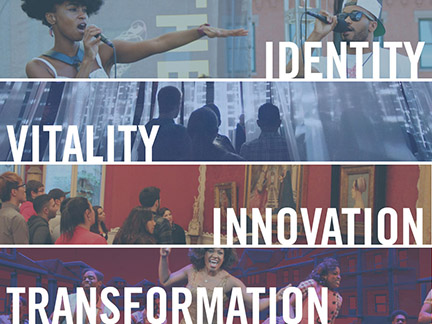Celebrating The Arts Factor in Greater Boston

Guest post by Catherine Peterson, Executive Director, ArtsBoston
As the Executive Director of ArtsBoston, Greater Boston’s largest arts service organization, I wasn’t surprised to learn that our city has been highly ranked (#6!) in the NCAR’s latest Arts Vibrancy Index. At ArtsBoston, we have been working closely with our arts and cultural organizations, along with stakeholders in both the public and private sector, to measure and celebrate the power of arts and culture to transform lives, build stronger communities, and strengthen the economy here in Greater Boston.
In 2014 ArtsBoston published The Arts Factor, which looked at the impact of arts and culture on Greater Boston through four lenses—Identity, Vitality, Innovation, and Transformation. The NCAR Arts Vibrancy Index reaffirms our own findings, and highlights just how essential the arts and culture sector is to our region.
The numbers tell the tale. Our sector is an economic powerhouse, with expenditures from non-profit arts organizations alone exceeding $1 billion per year. Arts and cultural events and venues welcome 18 million visits annually. That’s four times the attendance of our four major sports teams combined…and we all know how much Boston loves its sports teams! To put it another way, Boston’s arts and culture fans would sell out Fenway Park 486 times in one year—more than six seasons of Red Sox games in one year of arts and culture.
We know that all those audiences are spending money on dinner, parking, drinks, transportation, and more, collateral spending that adds up. In fact, cultural audiences in Greater Boston spend over $450 million per year outside of the cost of admission. That represents major economic impact that supports jobs and connects arts and culture to the larger fabric of our region’s economic vitality.
Of course, there is always more work to be done. The NCAR Arts Vibrancy Index is encouraging, but we recognize that there are critical areas where we need to improve.
We know, for instance, that our arts organizations have worked hard to maximize the earned revenue they generate from their programming, while Boston’s corporate, government, and foundation funding trails other comparable regions. The Boston Foundation explored this in its 2016 report “How Boston and Other American Cities Support and Sustain the Arts.” One revealing conclusion: reliance on individuals (whether through ticket sales, memberships, or individual donations) has limited the ability of Greater Boston arts and cultural organizations to take risks programmatically, which poses a long-term threat to the sector’s growth and relevance. We must intentionally foster an environment where there is more space for artistic risk-taking, particularly by advocating and committing to increased contributed support from institutional sources as a regional priority.
Data from The Arts Factor and the NCAR Arts Vibrancy Index helps arts advocates make a strong case for that kind of increased support. We know that investing the arts is a smart business and philanthropic decision, and that together we can tell our stories, back them up with powerful research, and make Boston an even better community in which to live, work, and play.